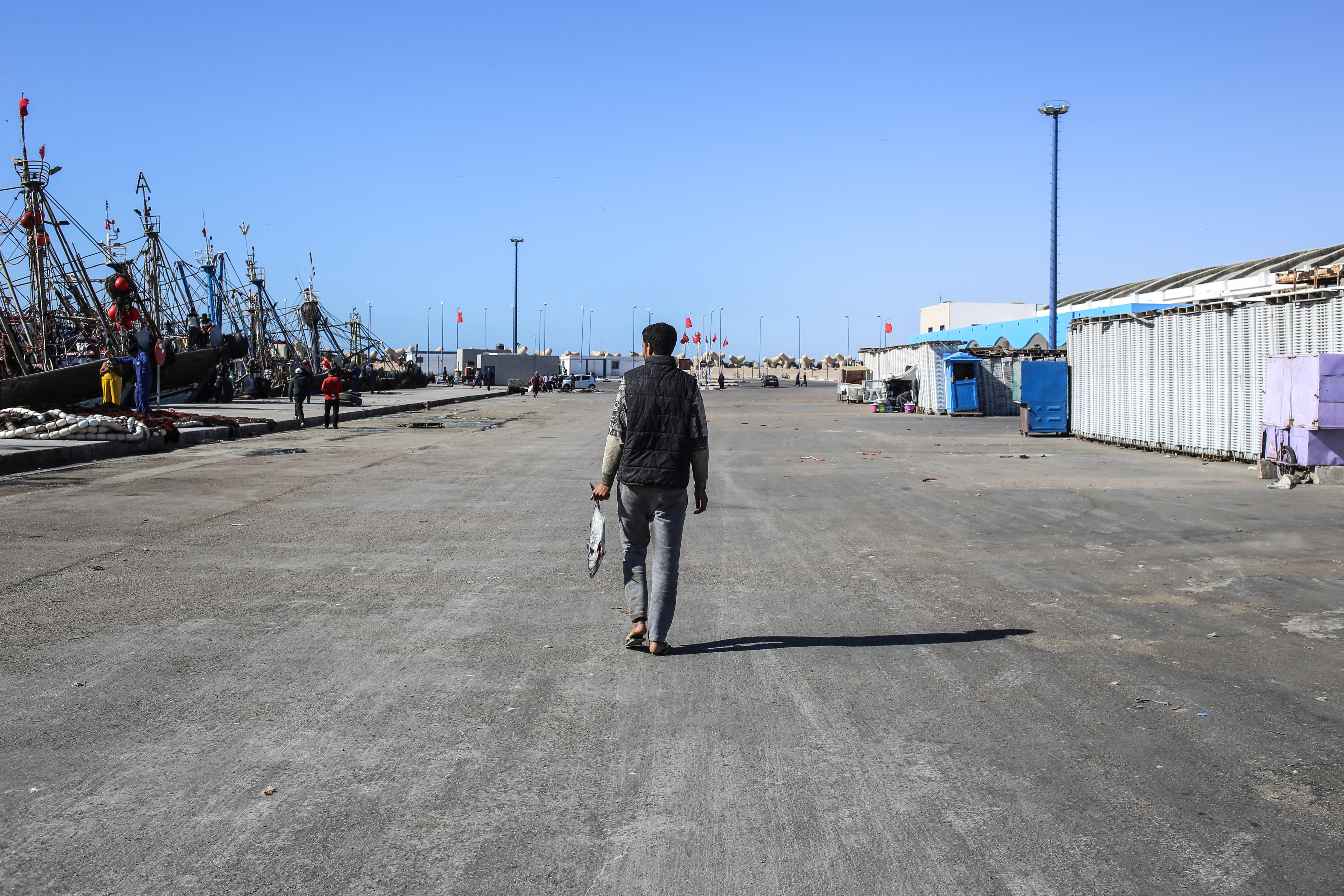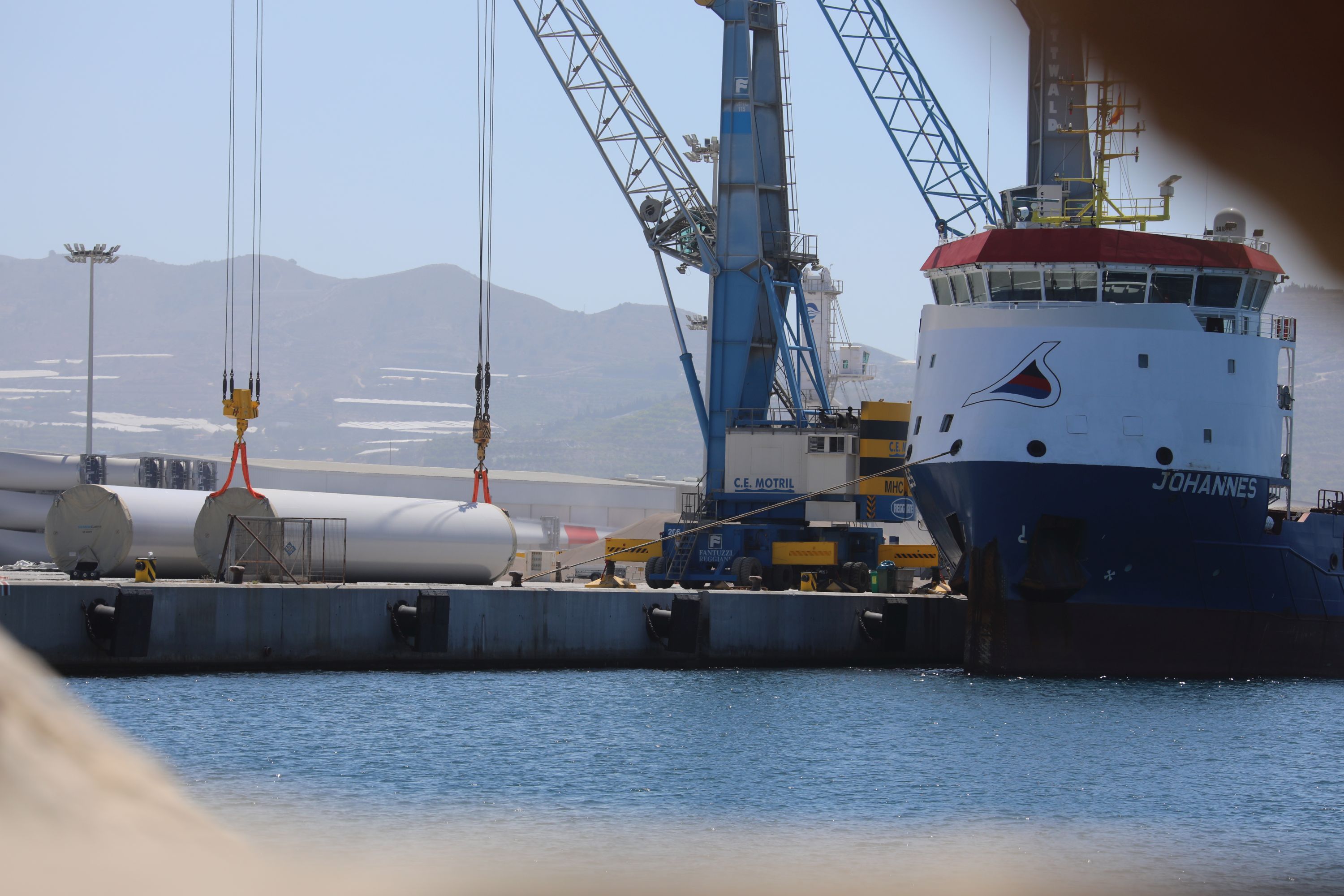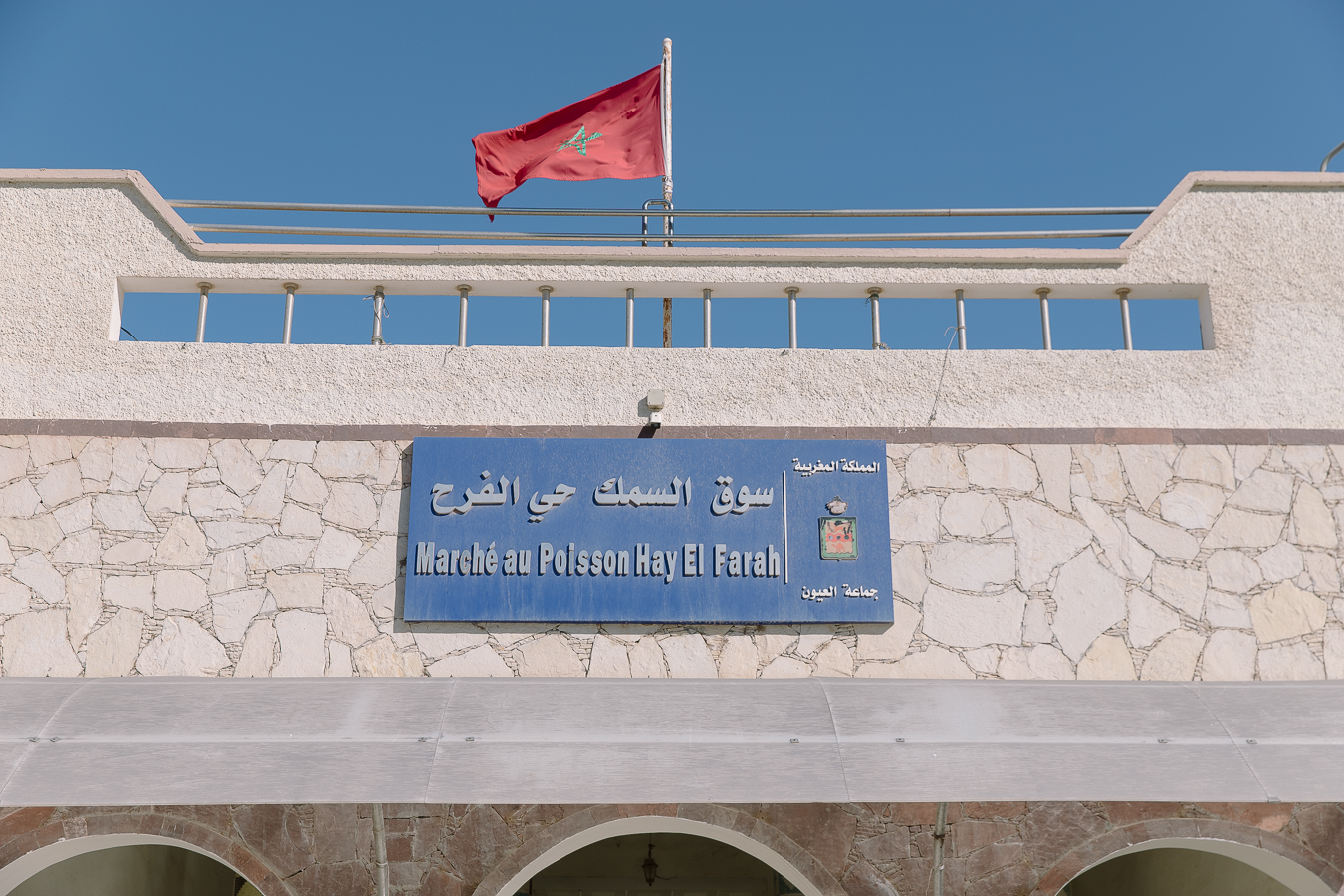
For decades, the Canary Islands have been importing sand from the occupied territory of Western Sahara. Although the imports went down during the financial crisis, the import has increased considerably during the last 10 years. Read the history of a theft which is hardly ever mentioned.
Sand – the second most used mater by mankind, after water – is abundant in Western Sahara, a territory largely occupied by Morocco since 1975. Sand is an irreplaceable material for construction, as it is the basic element for concrete, mortar and prefab materials. The exploitation of sand is the most important non-energetic mining sub-sector in terms of production and value. It even tops phosphates.
The first documented cargo of Western Saharan sand to the Canary Islands dates back to 1955 (download the Spanish press reports). Since then, the best known import is linked to the “Las Teresitas” beach project. “Las Teresitas” is the biggest artificial beach, whose first layers in 1968 were made of black-coloured, volcanic sand. But the City Council of Santa Cruz de Tenerife considered it cheaper to import sand from Western Sahara, as the volcanic alternative was scarce and therefore expensive.
In 1971, a 50 million pesetas loan was taken up to buy sand originating in Western Sahara, a Spanish colony at the time. A year later, about 141.647 m³ of sand (approximately 70.000 tonnes) arrived at “Las Teresitas”.
Op 15 June 1973, the beach of “Las Teresitas” opened up to general public. 25 years later, in 1998, the beach had to be regenerated with another 140.000 m³, this time at a cost of around 400 million pesetas financed through the Canary Islands’ coastal-agreement signed that same year. In November 1998, the beach was levelled with Saharawi sand.
Ironically, for many Saharawi refugee children participating in the “holidays in peace” program on the islands, the first trip to the sea was one to a beach laid with sand from their occupied homeland.
Scope of the plunder
There is no evidence on spoliation of sand during 1975 - when Spain illegally abandoned the Sahara, allowing Morocco and Mauritania to invade the territory – and 1991, when the UN brokered a cease-fire agreement between Polisario and the government of Hassan II.
In 2008, Western Sahara Resource Watch (WSRW) began to monitor the debarkation of sand from the occupied territories. The sand was stored in silos in Tenerife (Proyecto Dover S.L.) and in Las Palmas (GRANINTRA S.A.), before being processed into mortar or cement. WSRW noted that the origins of the sand were never specified in the production chain.
“... The mortar marketed by MOESCAN, under a license of Special Cements of the Islands as “MORTERE ESPECIAL ENLUCIDOS” on the Island of Fuerteventura, is a mortar that is composed of cement type CEM IV/A (P) 32,5 N UNE-EN 197-1:2000; and yellow sand from Africa obtained from the company PROYECTO DOVER S.L. Both elements are included in the list of the European Community market, and therefore meet the tests described below and the requirements of the UNE-EN 13139 Norm. Therefore, we consider them suitable for the manufacturing of mortars...”
This a concrete example of the camouflaging techniques used by the sand importers involved in sand trafficking from Western Sahara. Impunity is granted by the Canary Islands government, which does not impose traceability checks on the imports of raw materials coming from a territory pending decolonisation. The Port authority of Las Palmas and Tenerife (State Ports, Ministry of Development, Government of Spain) does not make the data public. The harbour administration of Tenerife explained WSRW that this is due to the update of their computer systems.
Due to the building crisis in Spain, the level of cement consumption has dropped to that of 1989. The debarkations of 2010 have been paralysed. Though cement utilization is slowly increasing throughout 2011, stolen sand from Western Sahara is still being imported for the construction of big tourist compounds in Cape Verde and Madeira. Morocco’s strategic financing has resulted in the construction of a cement factory in El Aaiún, capital city of occupied Western Sahara, importing cement clinker and producing cement locally. The illegal exploitation continues and remains lucrative.
New report: Certified occupation
International certification standards embellish Morocco’s controversial trade with fisheries and agricultural products in occupied Western Sahara, new report documents.
Certification giant SGS points fingers elsewhere
SGS blames everyone else for mistakes on MarinTrust certificates it had issued to Moroccan companies in occupied Western Sahara.
New report: Greenwashing Occupation
Out now: WSRW today publishes a new report outlining the massive - and deeply problematic - renewable energy projects that Morocco is developing in occupied Western Sahara.
GMP+ does not check if “sustainable” fish is legally caught
The world’s largest certification scheme for “safe and sustainable animal feed” does not check whether its certified fish feed companies source from illegal fisheries in occupied Western Sahara, where catches violate the Saharawi people’s right to self-determination.



